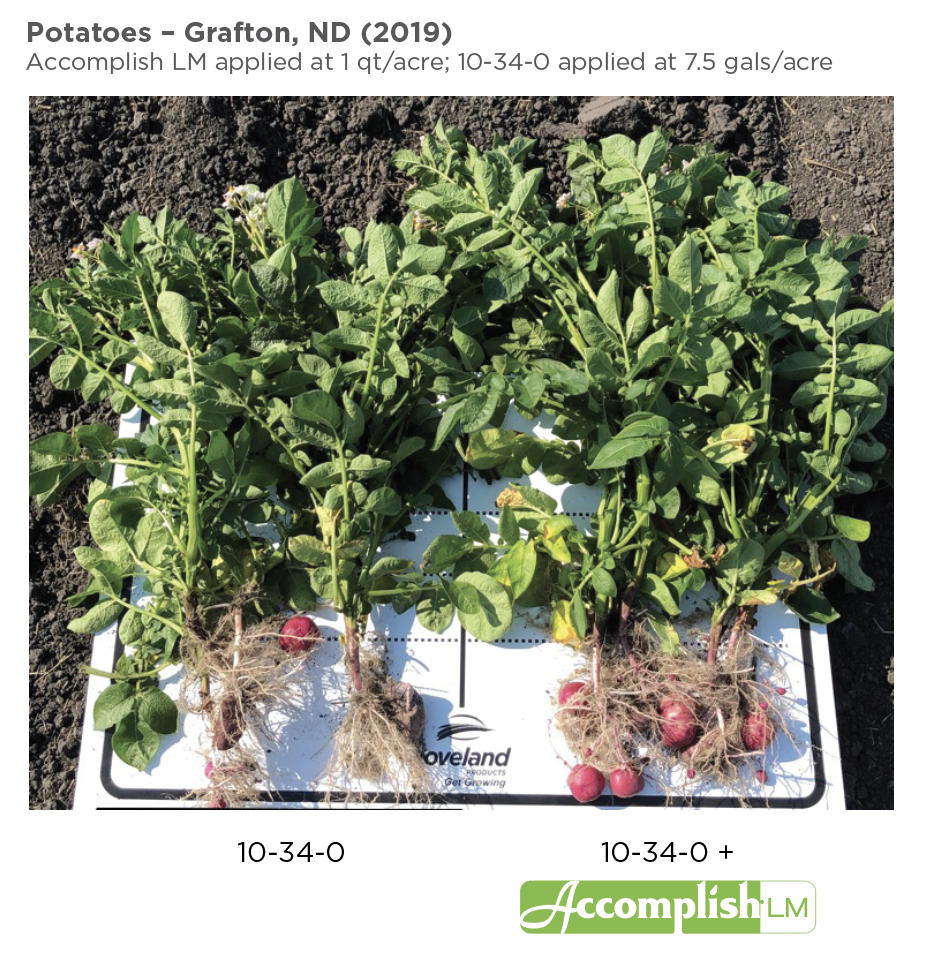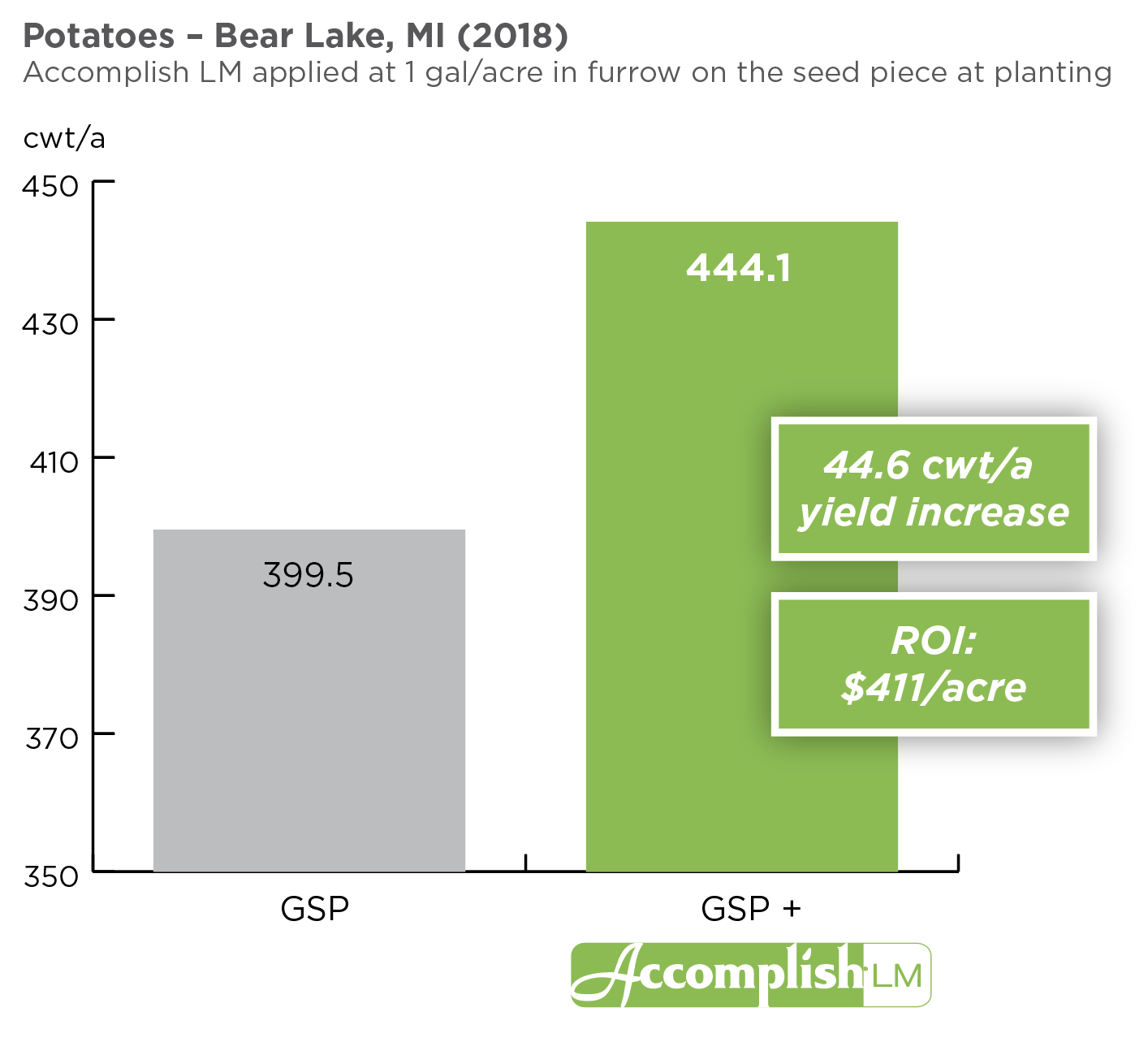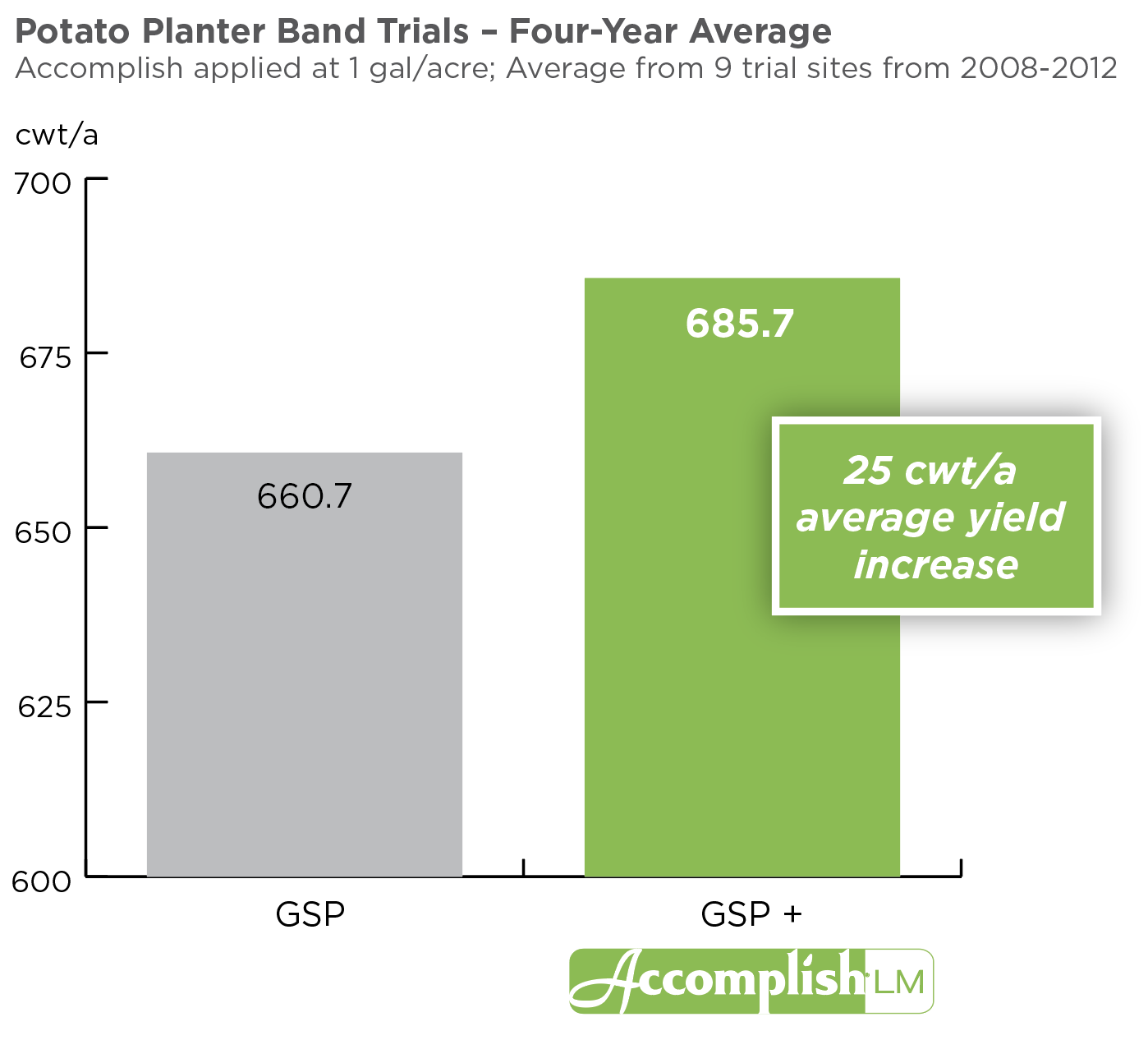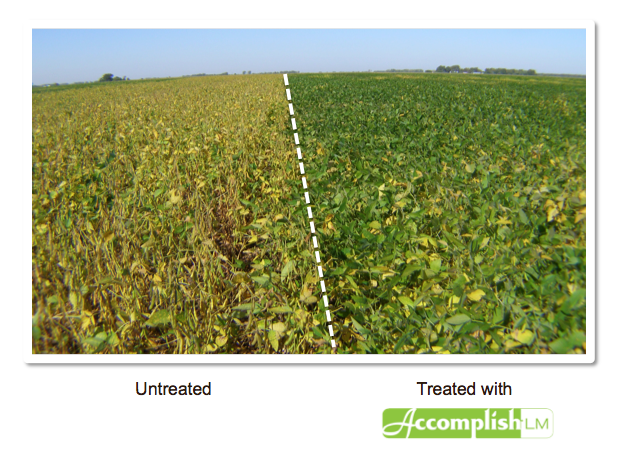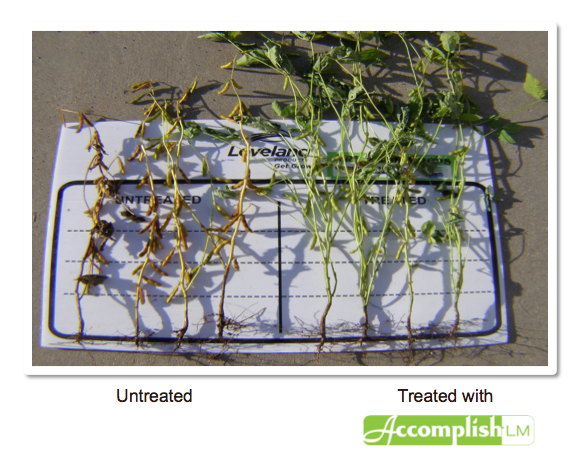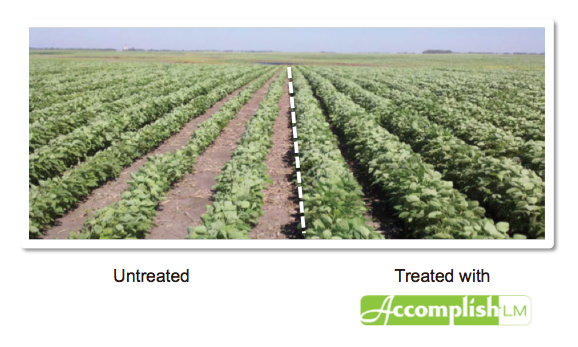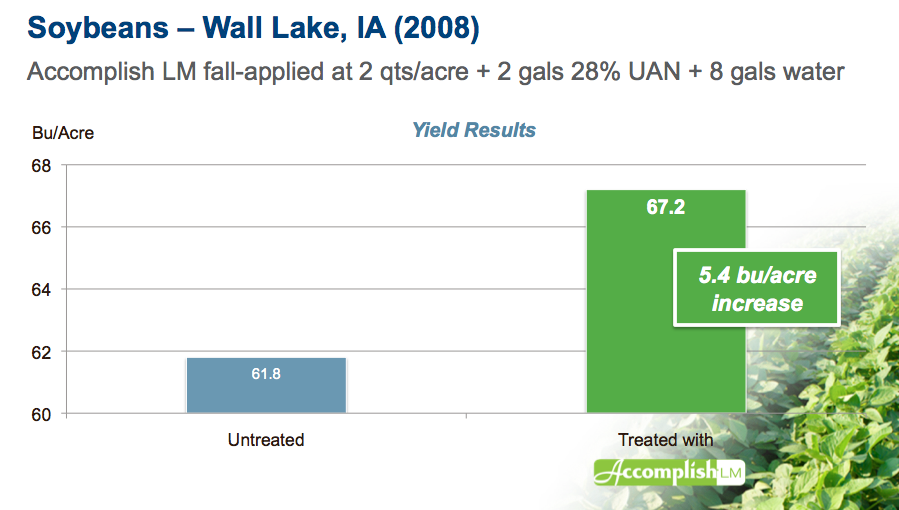We often focus on Accomplish LM in corn, soybean or wheat crops, but the benefits of Accomplish LM technology also extend to specialty crops like potatoes. A recent side by side comparison from a 2019 potato trial in Grafton, North Dakota shows earlier potato emergence and more robust plants when Accomplish LM has been added to the grower's standard potato fertilizer program. In this trial, Accomplish LM was applied at planting with 10-34-0, placed below the seed in a band.
This translates into yield benefits as well. In this 2018 potato trial from Bear Lake, Michigan, adding Accomplish LM to the grower's standard practice increased potato yield by 44.6 cwt per acre, with a return on investment of over $400 per acre to the grower.
Other trials similarly show that Accomplish LM is a great fit for growers who want to improve their potato yields. At nine sites that trialed Accomplish LM in potato planter bands from 2008-2012, adding Accomplish LM technology to the grower's standard fertilizer program led to an average potato yield increase of 25 cwt/acre compared to the grower's standard program alone.
We've also seen excellent results on seed potatoes and processing potatoes in Australia, showing the flexibility of this nutrient availability technology in different geographies.
For more information on Accomplish LM, contact your local Nutrien Ag Solutions location or download the Accomplish LM booklet.





